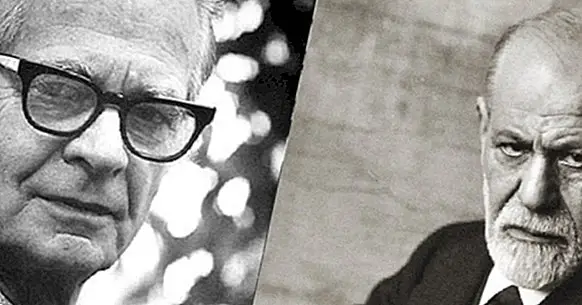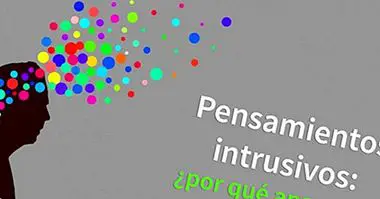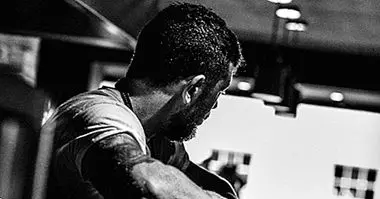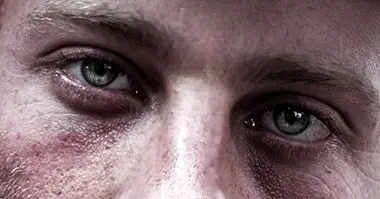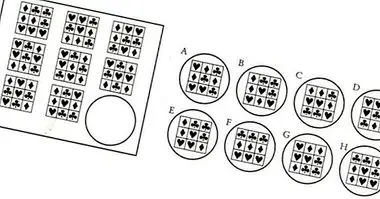The open war between psychoanalysis and behaviorism, explained in 8 keys
Psychology is a science that has harbored multiple ways and ways of understanding the human mind and its functioning. Different schools and currents of thought have appeared and disappeared, being born some to complement others or in opposition to their ways of seeing and acting.
Two of the psychological currents that have traditionally had conflicting positions have been psychoanalysis and behaviorism. These currents have not only pointed towards different objectives , but also define some basic concepts, such as "behavior" or "mind", in completely opposite ways.
In this article we will review the main fronts in which the battle between psychoanalysis and behaviorism .
- Related article: "The 7 main streams of Psychology"
Psychoanalysis
Being one of the best-known psychological schools, Psychoanalysis focuses its interest on the unconscious part of the mind. This current understands our behavior as the result of conflicts caused when managing and repressing the instincts and drives that emanate from the unconscious and that can not be eliminated altogether, but simply repressed.
Based on the ideas of its founder Sigmund Freud, psychoanalysis structures the human mind in different aspects, passing from the unconscious to the conscious. Concepts such as It, I and Superego refer to the part of our being that generates impulses, manages them and censures them based on social and learned morals, respectively. There are conflicts between the different parts of our being, which the ego aims to solve by using various defense mechanisms.
At the therapeutic level, psychoanalysis tends to deal with "hidden" aspects of the person . When explaining psychopathology orthodox psychoanalysis tends to focus on past events, explaining the current symptomatology based on events experienced in early stages of human development, in which different phases are visualized as the person develops. The presence of unresolved conflicts at some point of development will generate symptoms in the future, causing regressions to previous life stages.
For this current, the core of psychic life is the drive or instinct . In this aspect the different psychodynamic authors have been considering that these drives focused on different aspects, being in the case of the most classic psychoanalysis the libido or the sexual desire.
In addition, symbolism is often used both in the interpretation of the psyche and in various types of therapy and treatment. Aspects like dreams and unconscious manifestations are of great interest to explain mental contents.
Behaviorism
The behaviorist current , but nevertheless, aims to study the human mind in the most rigorous and empirical way possible through its only directly observable correlate: behavior. Its top priority is to achieve a scientific and testable explanation of behavior. So look for an objective observation discarding as far as possible unverifiable assumptions.
For the behaviorists, the behavior is governed by the capacity of association between different types of stimuli, the answers given to these and the consequences that these responses have. On the other hand, it is proposed that we are governed by universal and unalterable laws. We simply capture the information and from this we react in a specific way according to its characteristics.
Mainly it is considered that we are merely reactive to the conditions of stimulation, learning through the repetition of associations. However, some variants of behaviorism, such as radical behaviorism, understand that there is freedom and empowerment in the possibility of alter our environment so that this influences us as we want .
This paradigm, and especially the radical behaviorism advocated by B. F. Skinner, refrains from attributing a fundamental role to mental processes at the time of explaining how we behave, and the mind is considered rather as something that although it exists can not be analyzed objectively. The therapies created under this paradigm focus on the present, without focusing on past aspects, and aim to modify the current behavior of the subject who comes to consultation in order to make it more adaptive through processes based on learning.
The conflict between both currents
These currents in the history of psychology have often been opposed and even described as totally contrary . The reasons for this are many and, in fact, many authors consider that Behaviorism was born of opposition to psychoanalytic methodology .
Among the many differences, we highlight eight below.
one.Objectivity vs Symbolism
The psychoanalytic current is based on concepts that, while reflecting an interesting point of view of reality and although they have proved useful in many cases, they are not testable empirically . Aspects such as the unconscious, dreams or the conception of different types of internal conflicts or the different structures that are part of the psychic apparatus are widely discussed by behaviorists, who believe that it is only possible to explain human behavior through empirical methods.
2. From outside to inside: Personalists vs Environmentalists
One of the main differences or conflicts between psychoanalysis and behaviorism is the focus on different aspects. Psychoanalysis focuses on the intrapsychic . Considers that the origin of mental disorders and maladaptive behaviors are in a poor solution of intrapsychic conflicts of the subject, not being efficient defense mechanisms to address them.
However, for behaviorism all behavior is explained through associative processes which will be determined to a large extent by the characteristics of the stimuli. Thus, behaviorism practically does not take into account internal factors , but focuses on environmental aspects and processes elicited by elements external to the psyche.
3. Present and past
Behaviorism is a paradigm that focuses on current behavior and behavior. Although the maladaptive behavior can be explained based on a wrong learning or a lack of training, the main thing both in therapy and in research is to focus on the present process. Psychoanalysis on the other hand tends to analyze behavior and the mind through the individual's personal history , its understanding and analysis. That is to say, it is based on the past that originated the problems, and that is why it gives great importance to childhood.
4. Explanation of behavior
For psychoanalysis the behavior is governed by the concept of drive , which is mediated by the ego to make it coherent and acceptable to the superego and society as a whole. However, behaviorism explains behavior based on the repetition of the association between stimuli and responses.
5. Personality concept
For behaviorism, personality is nothing more than a behavioral pattern learned through the repetition of stimuli , while psychoanalysis considers it a way of managing and adjusting our impulses and impulses to social and moral reality.
6. Mechanisms of action
While psychoanalysis is mainly based on the analysis of the deep aspects and tries to expose the different conflicts without acting directly on them, behaviorism focuses on teaching the patient new behaviors directly through learning.
7. Purpose of therapy
Psychoanalysis aims to reduce the level of tension and internal conflict in the patient through various methods, while the goal of behavioral therapy focuses on making vary behavior towards more adaptive ways .
8. Transfer and countertransference
The relationship with the patient is an aspect of great importance in the practice of psychology. However, these concepts are specially worked and used by psychoanalysis, establishing behaviorism a more aseptic relationship in order to avoid transference phenomena beyond the establishment of a good therapeutic relationship.
- Related article: "The transference and countertransference in Psychoanalysis"

